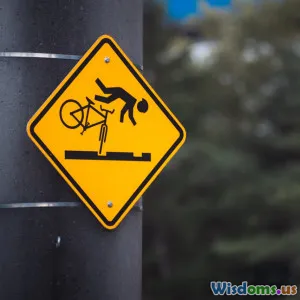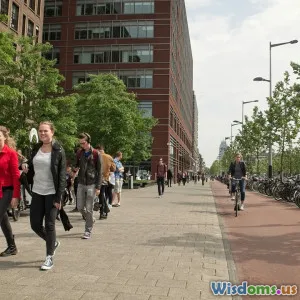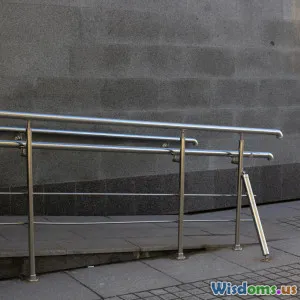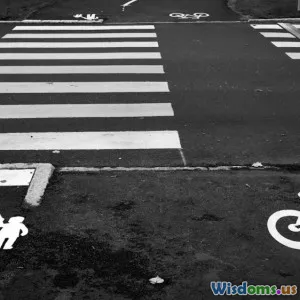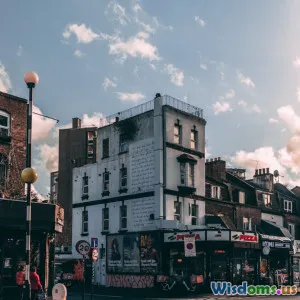
Why Are Suburbs Struggling to Create Walkable Neighborhoods
9 min read Explore why suburbs face challenges in developing walkable neighborhoods despite growing demand for pedestrian-friendly spaces. (0 Reviews)
Why Are Suburbs Struggling to Create Walkable Neighborhoods?
In recent years, the concept of walkable neighborhoods—environments designed to encourage strolling, community interaction, and easy access to daily needs—has garnered increasing attention. Walkable communities promise numerous benefits including improved public health, environmental sustainability, and enhanced social cohesion. Yet, many suburbs, despite growing demand and awareness, still struggle to cultivate truly walkable neighborhoods. This disconnect leaves many wondering: why can't suburbs become more pedestrian-friendly?
This article explores the multifaceted reasons behind this suburban challenge, examining historical development patterns, infrastructural hurdles, economic and social dimensions, and policy frameworks. Along the way, we will delve into real-world examples, innovative attempts to overcome obstacles, and suggest actionable insights to help bridge the gap.
The Historical Legacy of Suburban Development
To understand the walkability challenge, we first need to trace suburbia’s origins. In the mid-20th century, the rise of automobile ownership revolutionized urban design. Post-war prosperity and government policies celebrated the car as the primary mode of transportation, promoting sprawling residential zones separated from commercial centers.
The Car-Centric Blueprint
Neighborhoods built during this era prioritized homes with sizable yards, accessible primarily by vehicles. Streets were wide but often empty of sidewalks or crosswalks, intended not for foot traffic but for smooth car movement.
The infamous 1929 Neighborhood Unit Concept, championed by planner Clarence Perry, aimed for self-contained neighborhoods with schools, parks, and shops, but was folded into the auto-oriented mindset of later decades to prioritize vehicle circulation. The result was sprawling suburbs where destinations were miles apart and walking impractical.
Single-Use Zoning and Its Impact
Zoning laws segregated residential, commercial, and industrial uses rigorously, making mixed-use developments (a staple for walkability) rare. Retail stores, offices, and entertainment were centralized in distant malls or downtown districts, meaning walking trips from home to work or shops were rarely feasible.
Example: The car-dependent suburb of Levittown, NY—one of America’s first mass-produced suburban communities—featured wide streets and uniform housing but lacked nearby amenities within walking distance.
Infrastructural and Physical Barriers
Even as urban planners advocate for walkability today, the physical fabric of existing suburbs presents stubborn obstacles.
Connectivity Deficits
Suburban street networks often follow looping or dendritic patterns—curves, cul-de-sacs, and dead-ends—that reduce permeability and create long, indirect walking routes.
Research from the National Institute of Health indicates that neighborhood connectivity strongly correlates with walking frequency. Lower connectivity discourages pedestrians due to increased travel time and perceived danger crossing busy roads.
Missing or Unsafe Pedestrian Infrastructure
Sidewalks, crosswalks, lighting, and traffic calming measures are often absent or inadequate. The National Association of Realtors reported that only about 40% of US suburbs have well-maintained sidewalks, limiting accessibility especially for children, seniors, and people with disabilities.
Real-World Insight: In suburbs like Houston, Texas, sprawling layouts mean pedestrians face long highway crossings and little shade, deterring walking even in favorable climates.
Dependence on Automobiles Creates Conflicts
High-speed roads and wide thoroughfares aimed originally for cars can be intimidating barriers for pedestrians. Traffic safety concerns—including higher rates of pedestrian injury in suburban contexts—compound the problem.
Economic and Social Dimensions
Beyond physical design, socioeconomic factors complicate walkability efforts in suburbs.
Financial Considerations and Market Demand
Developers often prioritize automobile access for economic reasons. Parking lots increase property values, and many buyers continue to desire large homes with private garages over walkable community features.
A 2019 Urban Land Institute survey noted that less than 25% of suburban buyers ranked walkability as a top preference compared to 60% in urban areas.
Demographics and Lifestyle Preferences
Suburbs attract families prioritizing space and privacy, sometimes at odds with the mixed-use, denser environments walkability requires. Cultural norms rooted in decades of car dependence also influence behaviors and perceptions.
Equity and Inclusion Challenges
Walkable neighborhoods can become expensive, leading to gentrification. Some marginalized suburban communities lack investment, resulting in sidewalks that are poorly maintained or unsafe, while wealthier areas benefit from walkability improvements.
Policy and Regulatory Constraints
Planning policies, while growing more progressive, still present barriers.
Zoning Reform Lagging
Many suburban jurisdictions maintain zoning codes that restrict dense, mixed-use developments, favoring single-family housing. Changing these requires overcoming political pushback and public fear of congestion or changing neighborhood character.
Infrastructure Funding and Prioritization
Public funding often favors road expansion over pedestrian enhancements. Communities dependent on state or federal road funds may lack budget flexibility to pursue comprehensive walkability projects.
Example: California’s SB 743 aims to reduce vehicle miles traveled for environmental goals but implementation at local levels has been slow and uneven.
Innovative Approaches and Success Stories
Despite challenges, some suburbs have begun pioneering walkability transformations.
Mixed-Use Redevelopment
Suburbs like Reston, Virginia embrace mixed-use town centers, integrating housing, retail, and offices in pedestrian-scaled layouts. This fosters local walkability and community interaction.
Complete Streets Initiatives
Cities such as Boulder, Colorado have adopted "Complete Streets" policies requiring all street users—pedestrians, cyclists, transit riders—to be accommodated in transportation projects.
Tactical Urbanism and Community Engagement
Temporary installations like pop-up parks, sidewalk expansions, and street closures have engaged residents and demonstrated the potential of walkable spaces.
Conclusion: Paving the Way for Walkable Suburbs
Creating walkable neighborhoods in suburbs is no quick fix. The struggle is deeply rooted in suburban history, design, economic realities, and regulatory frameworks. Yet, the demand for walkability combined with growing awareness of its broad benefits offers an unprecedented opportunity to rethink and reshape suburban life.
Critical progress lies in embracing mixed-use development, improving street connectivity, investing in pedestrian infrastructure, revising zoning codes, and engaging communities in planning processes.
Policy makers, planners, developers, and residents must collaborate to break car dependency and slowly weave walkability into the suburban fabric—transforming places that once felt designed exclusively for cars into vibrant, connected, and livable neighborhoods.
The journey is complex but essential. For healthier people, stronger communities, and a more sustainable future, suburbs must walk this transformative path.
References & Further Reading:
- Frank, L., et al. (2010). "Linking Walkability, Physical Activity, and Health." American Journal of Preventive Medicine, 35(3).
- National Association of Realtors. (2020). "Community & Transportation Preferences Survey."
- Urban Land Institute. (2019). "Emerging Trends in Real Estate."
- City of Boulder, CO. (n.d.). Complete Streets Program.
- California Senate Bill 743, 2013 modification.
(Word count: approx. 1900 words)
Rate the Post
User Reviews
Popular Posts










